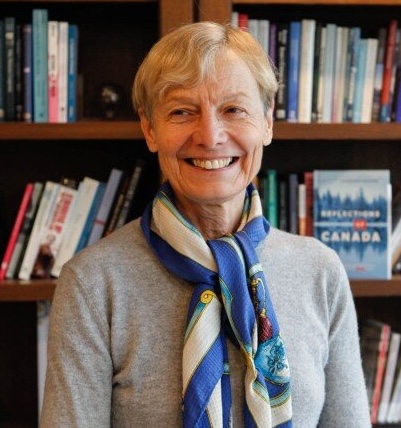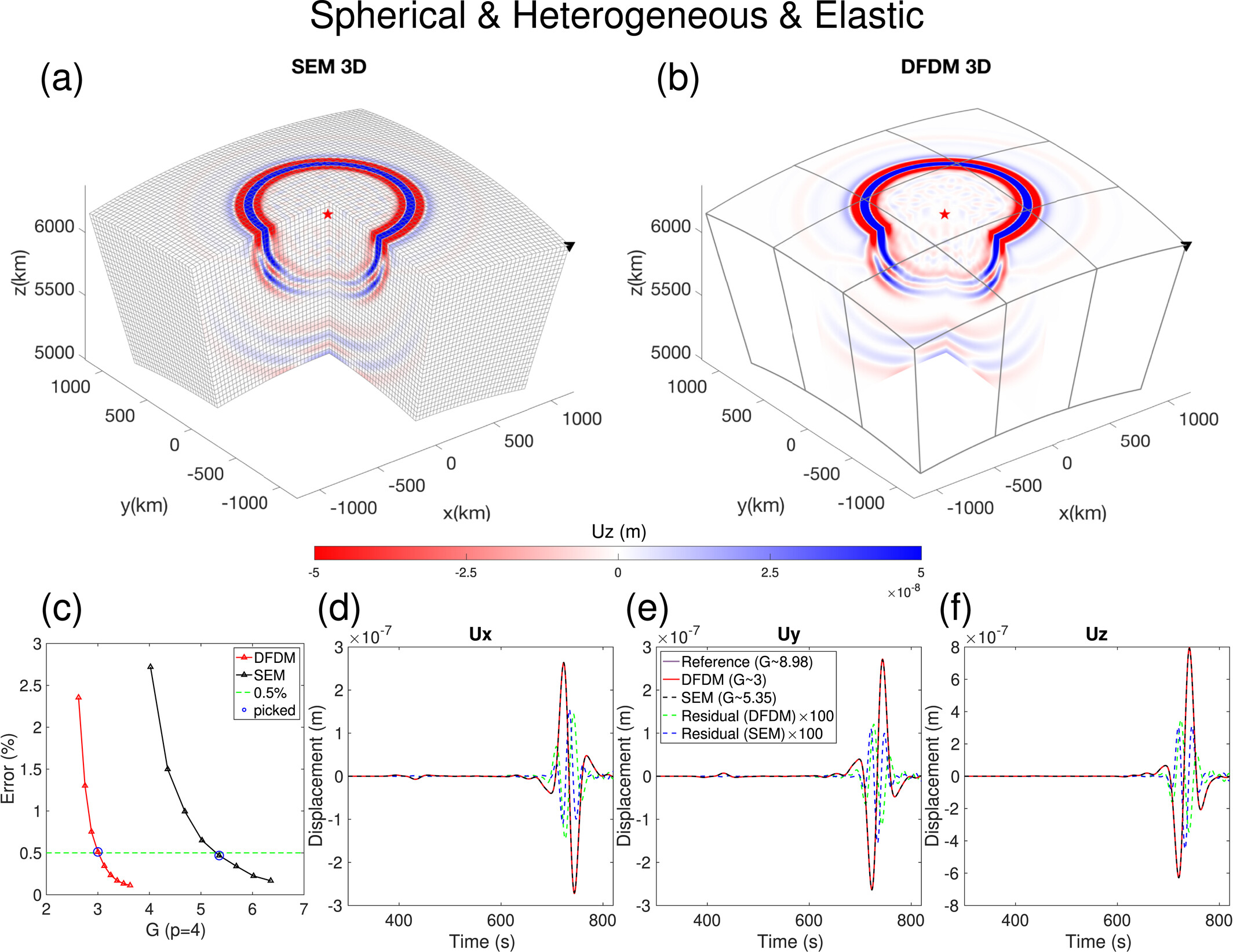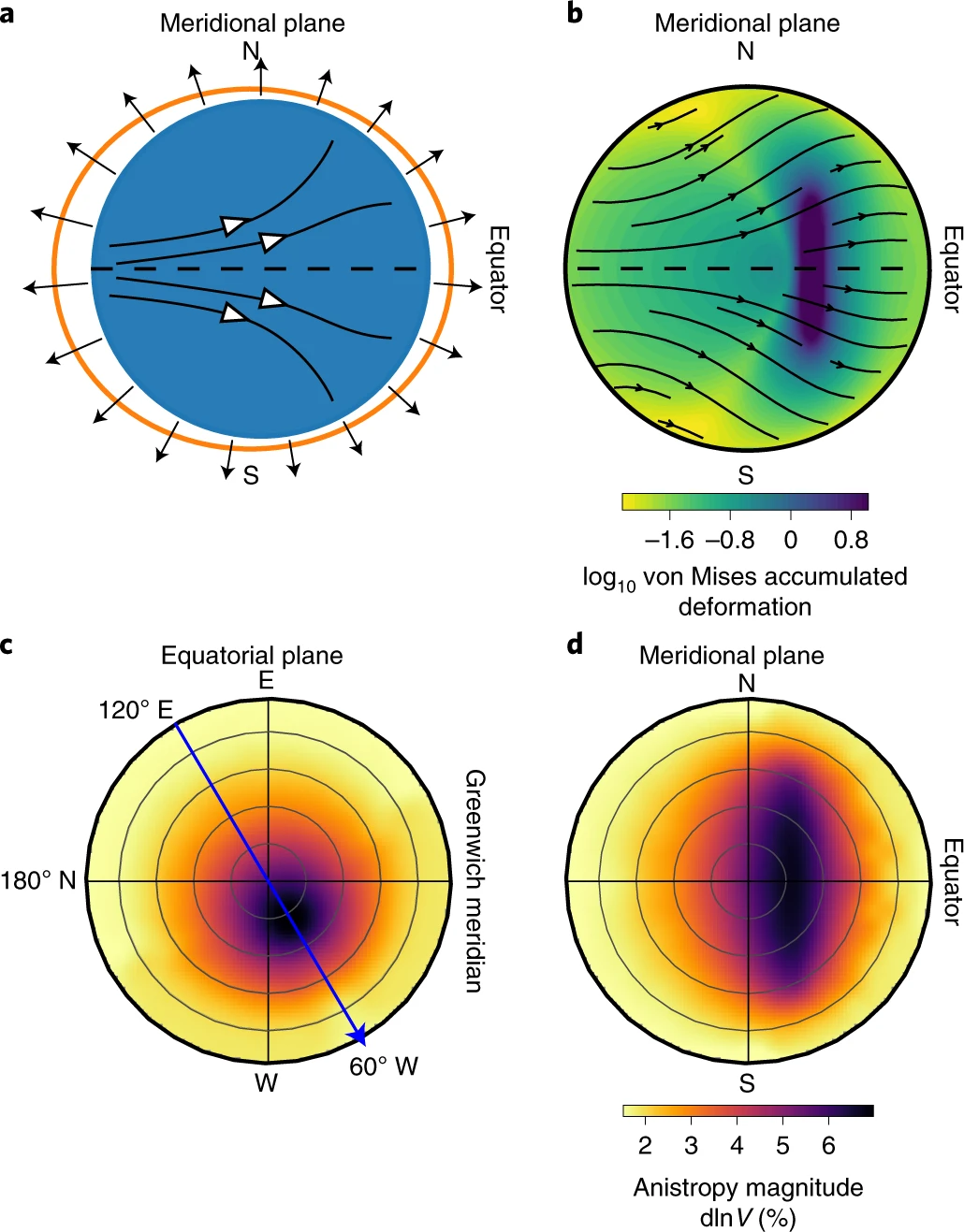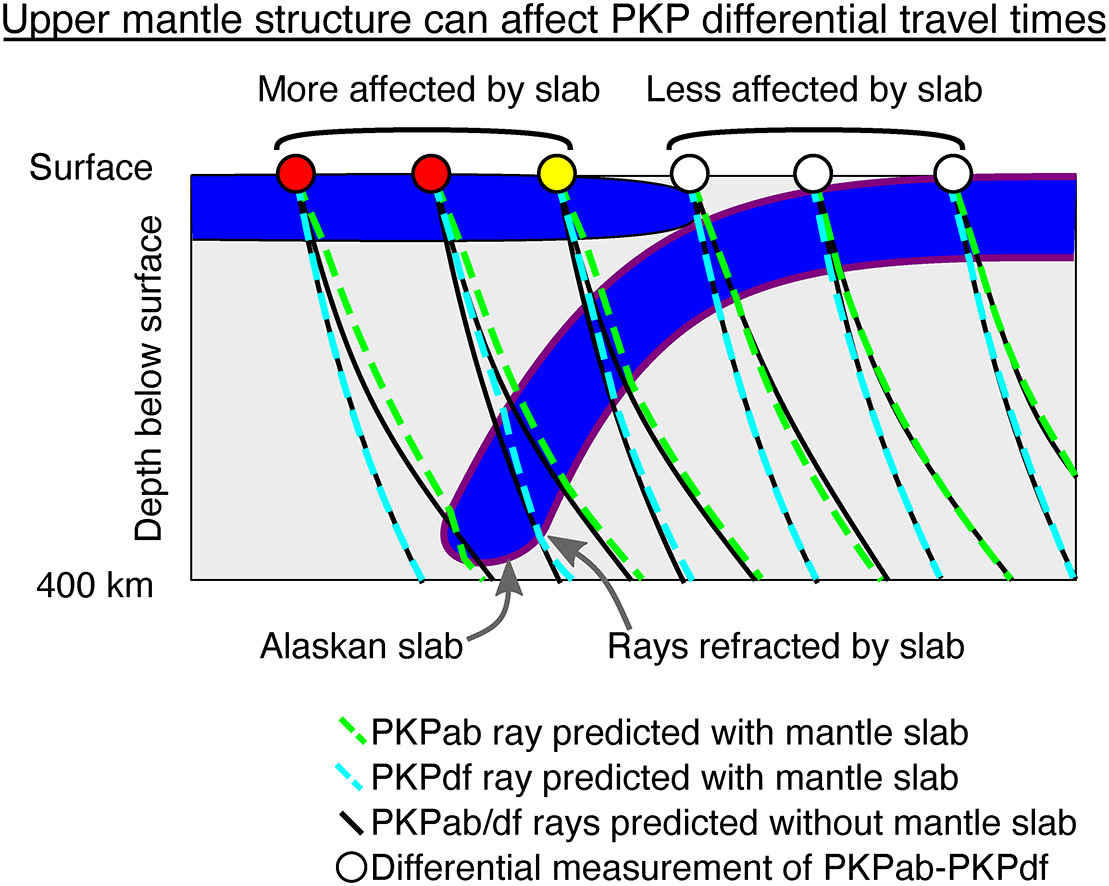Waveform Tomography Reveals Channeled Flow at the Base of the Oceanic Asthenosphere
Understanding the relationship between different scales of convection that drive plate motions and hotspot volcanism still eludes geophysicists. Using full-waveform seismic tomography, we imaged a pattern of horizontally elongated bands of low shear velocity, most prominent between 200 and 350 kilometers depth, which extends below the well-developed low-velocity zone.
Abstract
Understanding the relationship between different scales of convection that drive plate motions and hotspot volcanism still eludes geophysicists. Using full-waveform seismic tomography, we imaged a pattern of horizontally elongated bands of low shear velocity, most prominent between 200 and 350 kilometers depth, which extends below the well-developed low-velocity zone. These quasi-periodic fingerlike structures of wavelength ~2000 kilometers align parallel to the direction of absolute plate motion for thousands of kilometers. Below 400 kilometers depth,velocity structure is organized into fewer, undulating but vertically coherent, low-velocity plumelike features, which appear rooted in the lower mantle. This suggests the presence of a dynamic interplay between plate-driven flow in the low-velocity zone and active influx of low-rigidity material from deep mantle sources deflected horizontally beneath the moving top boundary layer.
Click placeholder to learn more about the SEMum2 Model, a global radially anisotropic shear-velocity model of the earth’s upper mantle and transition zone.
Figures


Download
Download the paper here.
More details on the SEMum model can be found here
Press Coverage
Related Papers
Lekic, V. and B. Romanowicz (2011) Inferring mantle structure by full waveform tomography using the Spectral Element Method, Geophys. J. Int., 185, 799-831, doi:10.1111/j.1365-246X.2011.04969.x.
Lekic, V. and B. Romanowicz (2011) Tectonic regionalization without a priori information: a cluster analysis of upper mantle tomography, Earth Planet. Sci. Lett., 308, 151-160. doi:10.1016/j.epsl.2011.05.050.




